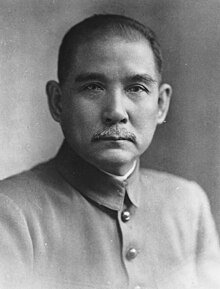
“Yong Soon Min: When the Personal Became Political”

### The Resilient Legacy of Yong Soon Min: Bridging Art, War, and Identity
#### Exploring *KISSSSS* and Its Reflection on the Korean Conflict
**IRVINE, California —** A retrospective exhibition titled *KISSSSS* at the Contemporary Arts Center Gallery, University of California, Irvine, offers a powerful reflection on the work of late Korean-American artist Yong Soon Min. On display until December 14, *KISSSSS* not only celebrates Min’s significant contributions to the intersection of art and politics but also amplifies her lifelong examination of the unresolved Korean War and its influence on her diasporic identity.
#### Art Reflecting Geopolitical Tensions
Yong Soon Min’s final exhibition features works that delve deep into the personal and political layers of the Korean conflict, specifically the continuous geopolitical instability on the Korean peninsula. Her art offers a nuanced portrayal of the psychological remnants of a war that has never truly ended—highlighting how the conflict shapes personal and collective identities.
In the 2018 print work *Both Sides Now*, Min juxtaposes two postcard sets—one from South Korea (1995) and the other from North Korea (1998)—into a single print. In doing so, she creates a composite image that challenges one-sided narratives commonly associated with the Korean War. “This is the DMZ,” Min reminds us, emphasizing the personal toll of division, where she, like many Koreans, exists in a liminal, dual space—simultaneously looking on from the edges while being neither fully Korean nor fully American.
The DMZ also becomes a layer of abstraction in *Still/Incessant* (2018/2024). This artist book presents an image of three military-green tables from the Peace Museum at Panmunjom, the site where the 1953 Korean Armistice Agreement was signed, perpetuating an uneasy ceasefire between North and South Korea. As viewers flip through each page, the image becomes incrementally shaded in deeper red, indicating the persistence of conflict and its underlying tensions. Over time, the once neutral visuals bleed into red until they are completely saturated, suggesting that the armistice—while holding war at bay—has done little to erase the active tension simmering beneath the surface.
#### The Journey Through *KISSSSS*: Chronology as Memory
The exhibition does not merely focus on still imagery but also highlights ongoing historical reckonings. A seven-station installation within the gallery frames the history of the Korean War in stages, from its origins at the close of World War II to the present, marking crucial moments such as the establishment of the 38th parallel and the signing of the Armistice Agreement in 1953. These markers serve as physical representations of unresolved grief, with Min underscoring the fact that “Koreans are technically still at war today.”
Interwoven in this chronology is Min’s exploration of longing, loss, and the quest for unification. Through photographic works, she stages actors in intimate, obscure embraces, their faces hidden behind the flags of various nations (North Korea, South Korea, the U.S., and others). Her reference to René Magritte’s *The Lovers* (1928) draws attention to the universal pursuit of connection—a longing tempered by political obstacles that have kept the Korean peninsula divided.
#### Personalizing the Political
Min’s role as a feminist and activist informs the emotional undercurrents of these works. By combining viewpoints from both sides of the DMZ, she does not simply critique historical narratives but rather makes clear that the political is inextricable from the personal. Her cross-examination of geopolitical powers—whether from North Korea, South Korea, the United States, the Soviet Union, or China—extends beyond the Korean War to highlight modern militarized states and international relations.
One example of her activism’s contemporary relevance is mirrored in the recent barring of Korean-American peace activist Christine Ahn from entering South Korea. Ahn—a prominent advocate for feminist-led peace across the Korea DMZ—was denied entry just weeks before Min’s exhibition. The incident exemplifies the ongoing suppression of pacifist movements and reinforces Min’s longstanding argument: the consequences of the Korean War and military action ripple through generations, often disproportionately affecting women and marginalized communities.
#### The Unfinished Work: *KISSSSS* as Reflection, Protest, and Legacy
*KISSSSS* is Yong Soon Min’s final work, and it remains unfinished. Spanning a long corridor in the gallery, the project culminates in a striking full-size enlargement of the same three military tables featured in *Still/Incessant*. This repetition is deliberate, a metaphor for the cyclical and prolonged nature of the Korean War. Seven brick “stations” placed along the length of the corridor act as signifiers of key historical junctures during the Korean conflict, transitioning from post-WWII occupations to the complex web of international alliances that